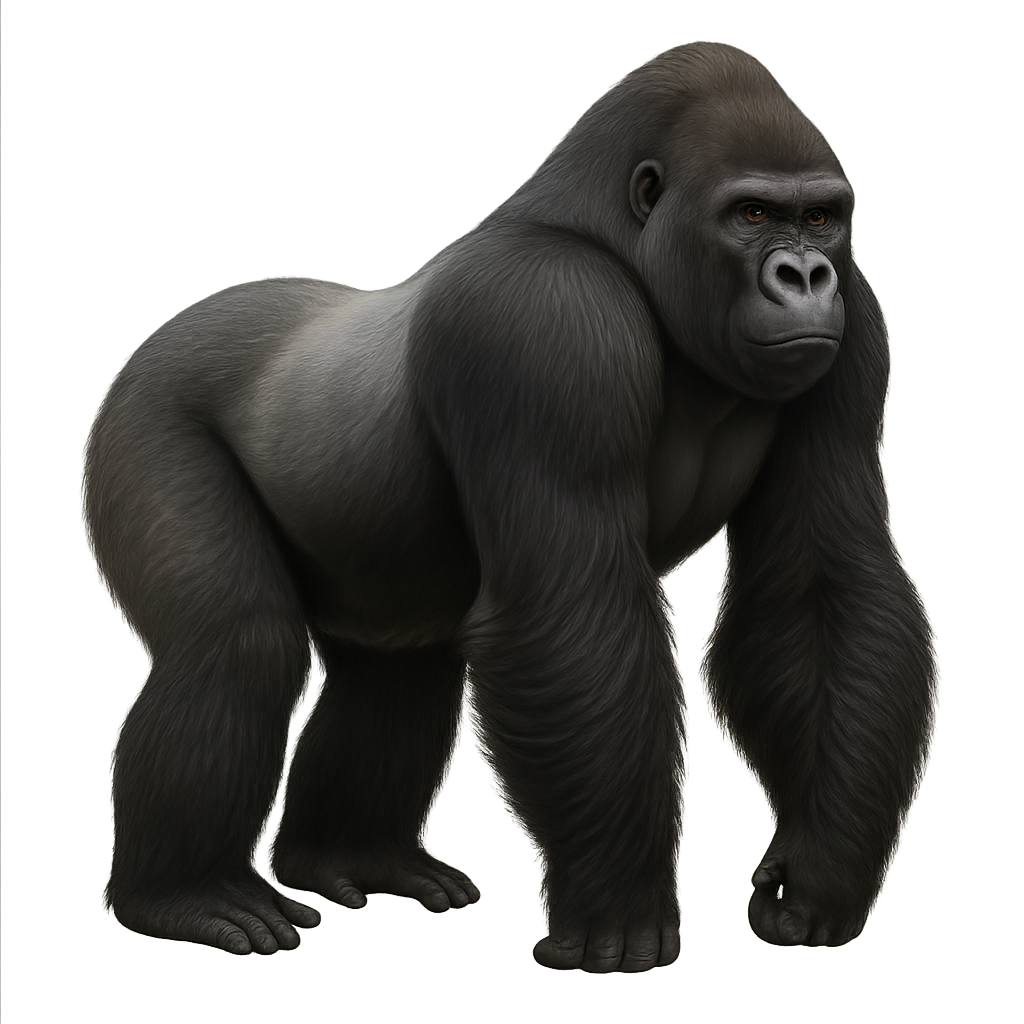Observe and photograph a species in its natural habitat
Learn where and when to observe a species in the wild, how to recognize it in the field, and what habitats it lives in. Get photography tips adapted to its behavior and capture stunning images without disturbing the animal. For full details, open the complete profile in the WildlifePhotographer app.
Western Gorilla
Scientific name: Gorilla gorilla

IUCN Status: Endangered
Family: HOMINIDAE
Group: Mammals
Shyness: Shy
Safe distance: 70 m
Breeding season / Courtship: 01.01-31.12
Gestation: 8,5 mois
Births: 01.01-31.12
Habitat:
Tropical forests and swamps
Description:
The Western Gorilla is a large primate species, closely related to its cousin the mountain gorilla. It is slightly smaller, with an average size of 1.6 to 1.8 meters for males and 1.4 to 1.6 meters for females, weighing between 140 and 200 kg for males and 70 to 120 kg for females. Its fur is generally black, with lighter hair on the back of adult males, who are referred to as "silverbacks" due to the silver color of their back fur. Western Gorillas primarily inhabit the tropical forests of West and Central Africa, notably in Cameroon, the Republic of Congo, the Central African Republic, and Guinea. They feed mainly on plants, fruits, leaves, and stems, and they are predominantly herbivores. Western Gorillas live in social groups led by a dominant male, and they are known for their calm and peaceful behavior. While they are not as endangered as mountain gorillas, Western Gorillas are still at risk due to habitat loss, poaching, and disease.
Recommended lens:
>=300 mm
Photography tips:
Approach slowly and carefully—lowland gorillas can be more territorial, so keeping a safe distance is essential.
Use soft light in the early morning or late afternoon to capture coat texture and facial expressions without harsh shadows.
Look for social interactions: gorillas are highly social animals, and their communication moments make for powerful photos.
Be patient—they often rest or feed for long periods. Wait for activity or interaction to capture meaningful shots.
IUCN status: Endangered. Respect their natural space and follow local conservation guidelines.
Ready to take action?
Choose your platform and start your free trial today



